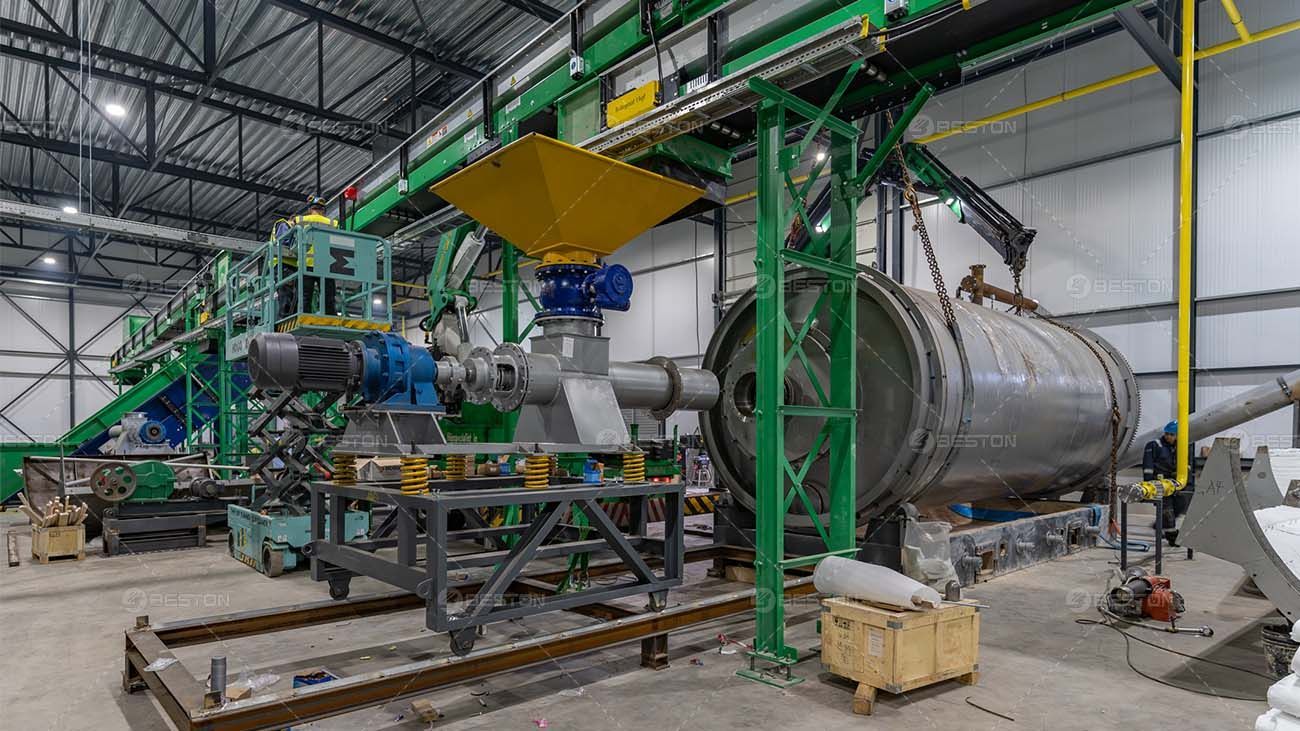What is Continuous Plastic Pyrolysis Plant?

A continuous plastic pyrolysis plant represents a sophisticated technology designed to convert plastic waste into valuable products through a continuous thermal decomposition process. This type of pyrolysis plant is engineered for efficiency, scalability, and uninterrupted operation, making it a crucial tool in modern waste management and resource recovery.
Understanding Continuous Plastic Pyrolysis
Continuous plastic pyrolysis involves the systematic heating of plastic waste in the absence of oxygen. This thermochemical process breaks down plastics into smaller molecules, yielding several valuable byproducts. The process operates in a controlled environment, where temperature, pressure, and reaction time are meticulously regulated to maximize efficiency and output.
Key Components of a Continuous Plastic Pyrolysis Plant
A continuous plastic pyrolysis plant comprises several essential components, each playing a pivotal role in the pyrolysis process:
- Feedstock Loader: This component is responsible for the continuous feeding of plastic waste into the pyrolysis reactor. It ensures a steady supply of material for processing and minimizes downtime.
- Pyrolysis Reactor: The reactor is where the actual pyrolysis occurs. It is designed to heat the plastic waste to high temperatures, typically ranging from 350°C to 800°C, in the absence of oxygen. The reactor’s design includes advanced insulation and heat control systems to maintain optimal conditions for pyrolysis.
- Condensation System: This system captures and condenses the vapors released during pyrolysis into liquid products, such as pyrolysis oil. It often includes cooling systems and condensate collection units.
- Gas Collection and Treatment: The gases produced during pyrolysis are collected and processed to remove impurities. This system ensures that harmful gases are treated before release or can be used as fuel in the plant’s energy system.
- Char Collection Unit: The solid residue left after pyrolysis, known as char, is collected in this unit. Char can be used for various applications, including as a soil amendment or in industrial processes.
- Control System: The control system manages the entire operation of the plant, including temperature regulation, feedstock management, and safety protocols. Modern systems offer automated controls and real-time monitoring to ensure optimal performance.
Advantages of Continuous Plastic Pyrolysis Plants
The continuous plastic pyrolysis plant offers several advantages over batch processing systems and traditional waste management methods:
- Continuous Operation: Unlike batch systems, continuous plastic pyrolysis plants operate without interruption, allowing for a steady and efficient processing of plastic waste. This feature increases overall throughput and productivity.
- High Efficiency: Continuous pyrolysis plants are designed to maximize the efficiency of the pyrolysis process. They are optimized for heat retention and energy utilization, resulting in higher yields of valuable byproducts such as pyrolysis oil and syngas.
- Scalability: These plants are scalable, making them suitable for both small-scale and large-scale operations. The continuous processing capability allows for adaptation to varying volumes of feedstock, meeting different industrial needs.
- Reduced Environmental Impact: By converting plastic waste into useful products, continuous plastic pyrolysis plants mitigate the environmental impact associated with landfilling and incineration. They also reduce the emission of harmful pollutants by capturing and treating gases produced during pyrolysis.
- Resource Recovery: The byproducts of the pyrolysis process, including pyrolysis oil, syngas, and char, represent valuable resources. Pyrolysis oil can be refined for use as an alternative fuel, syngas can be utilized for energy generation, and char can be employed in various industrial applications.
Applications of Pyrolysis Byproducts
The byproducts generated from a continuous plastic pyrolysis plant have diverse applications:
- Pyrolysis Oil: This liquid product can be used as an alternative fuel or further processed into chemicals and additives. It serves as a potential substitute for fossil fuels in various industrial processes.
- Syngas: The gaseous product, consisting primarily of hydrogen and carbon monoxide, can be used for power generation or as a feedstock for chemical synthesis. It is a valuable resource for energy recovery.
- Char: The solid residue from pyrolysis has applications as a soil conditioner, in construction materials, or as a precursor for activated carbon production. Its properties make it suitable for enhancing soil fertility and environmental remediation.
Technological Advancements in Continuous Plastic Pyrolysis
Recent advancements in pyrolysis technology have enhanced the performance and efficiency of continuous plastic pyrolysis plant and plastic pyrolysis machine price
- Advanced Reactor Designs: Modern reactors feature improved designs for better heat distribution and reaction control. These innovations enhance the efficiency of the pyrolysis process and increase the yield of valuable byproducts.
- Energy Recovery Systems: Many continuous plastic pyrolysis plants incorporate energy recovery systems that capture and utilize waste heat or syngas for powering plant operations, reducing overall energy consumption.
- Automated Control Systems: Automation and real-time monitoring systems enable precise control of pyrolysis parameters, improving the consistency and reliability of the process.
- Enhanced Gas Treatment Technologies: Advances in gas treatment technologies ensure that emissions are effectively managed, meeting stringent environmental regulations and reducing the risk of pollution.
Conclusion
A continuous plastic pyrolysis plant offers a sophisticated and efficient solution for managing plastic waste through continuous processing. The technology’s advantages, including high efficiency, scalability, and reduced environmental impact, make it an attractive option for industries seeking sustainable waste management practices. By harnessing the benefits of continuous pyrolysis, valuable resources can be recovered from plastic waste, contributing to a more sustainable and resource-efficient future.
